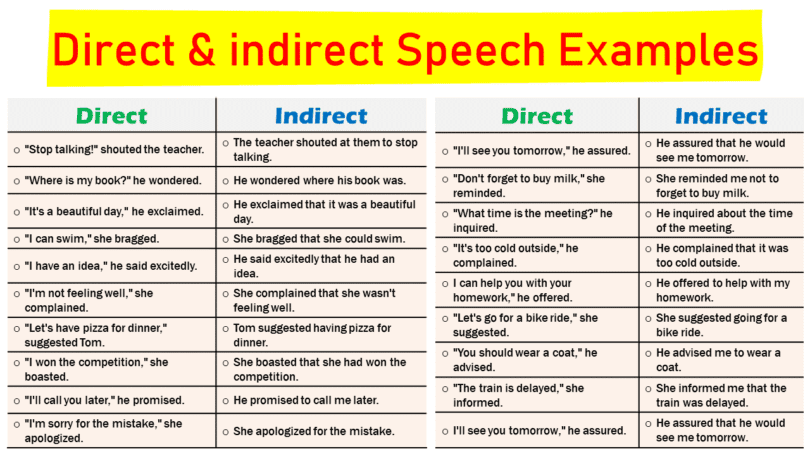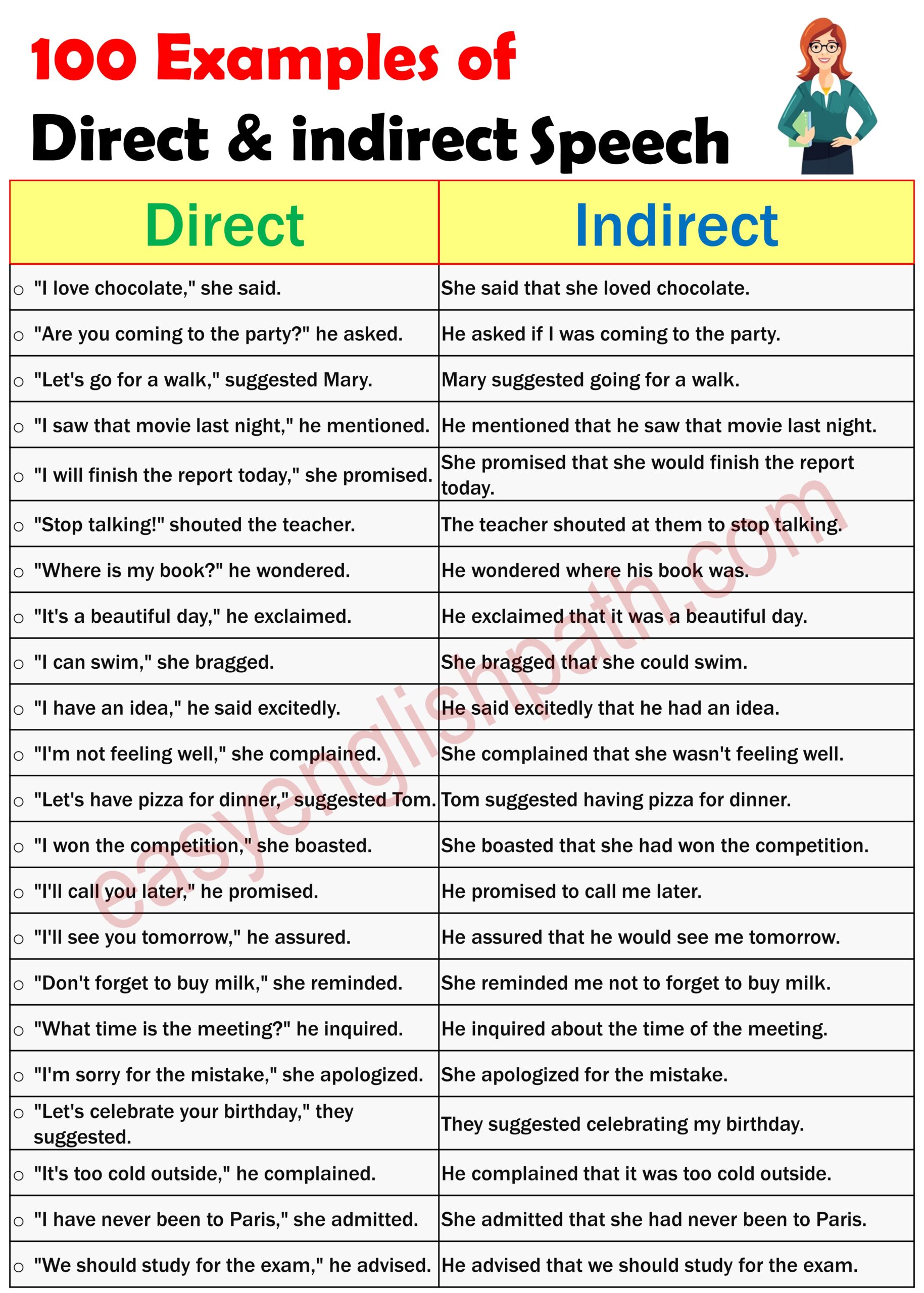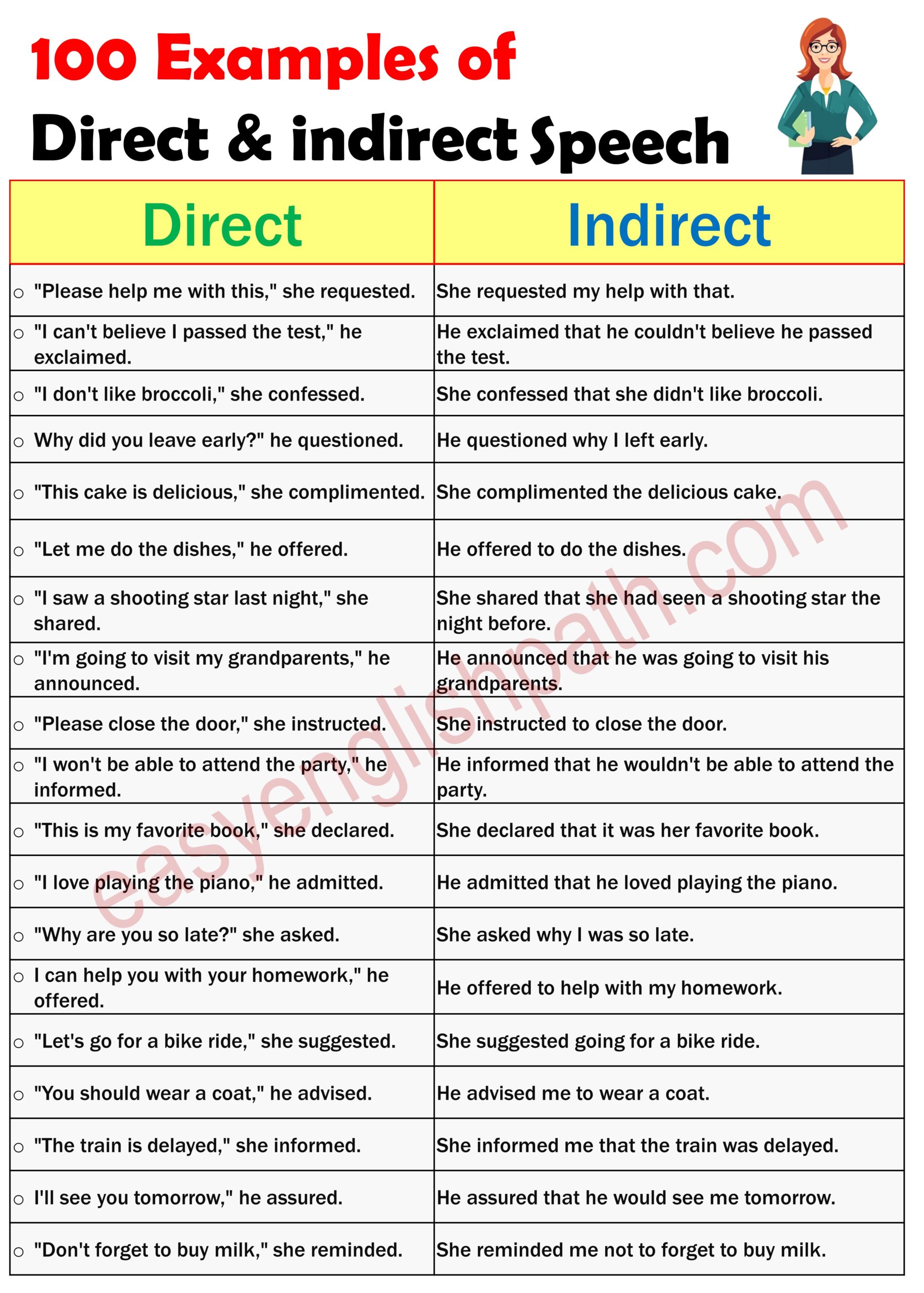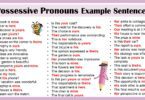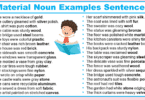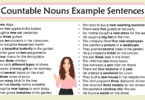Well, it is really important to learn how people talk in their daily lives. Let’s describe the main difference between direct and indirect speech examples! Direct speech is when we want to say exactly what someone else said, like quoting them. Indirect speech is a bit different, it is when we tell what someone said without quoting them directly. Understanding direct and indirect speech sentences can help us communicate effectively. For example, if someone says, I’m hungry, in indirect speech, we can say, They said they were hungry, in indirect speech.
Direct and Indirect Speech Examples
| Direct Speech | Indirect Speech |
|---|---|
| “I love chocolate,” she said. | She said that she loved chocolate. |
| “Are you coming to the party?” he asked. | He asked if I was coming to the party. |
| “Let’s go for a walk,” suggested Mary. | Mary suggested going for a walk. |
| “I saw that movie last night,” he mentioned. | He mentioned that he saw that movie last night. |
| “I will finish the report today,” she promised. | She promised that she would finish the report today. |
| “Stop talking!” shouted the teacher. | The teacher shouted at them to stop talking. |
| “Where is my book?” he wondered. | He wondered where his book was. |
| “I’m going on vacation next week,” she informed. | She informed me that she was going on vacation next week. |
| “It’s a beautiful day,” he exclaimed. | He exclaimed that it was a beautiful day. |
| “I can swim,” she bragged. | She bragged that she could swim. |
| “I have an idea,” he said excitedly. | He said excitedly that he had an idea. |
| “I’m not feeling well,” she complained. | She complained that she wasn’t feeling well. |
| “Let’s have pizza for dinner,” suggested Tom. | Tom suggested having pizza for dinner. |
| “I won the competition,” she boasted. | She boasted that she had won the competition. |
| “I’ll call you later,” he promised. | He promised to call me later. |
| “I’ll see you tomorrow,” he assured. | He assured that he would see me tomorrow. |
| “Don’t forget to buy milk,” she reminded. | She reminded me not to forget to buy milk. |
| “What time is the meeting?” he inquired. | He inquired about the time of the meeting. |
| “I’m sorry for the mistake,” she apologized. | She apologized for the mistake. |
| “Let’s celebrate your birthday,” they suggested. | They suggested celebrating my birthday. |
| “It’s too cold outside,” he complained. | He complained that it was too cold outside. |
| “I have never been to Paris,” she admitted. | She admitted that she had never been to Paris. |
| “We should study for the exam,” he advised. | He advised that we should study for the exam. |
| “Please help me with this,” she requested. | She requested my help with that. |
| “I can’t believe I passed the test,” he exclaimed. | He exclaimed that he couldn’t believe he passed the test. |
| “I don’t like broccoli,” she confessed. | She confessed that she didn’t like broccoli. |
| Why did you leave early?” he questioned. | He questioned why I left early. |
| “This cake is delicious,” she complimented. | She complimented the delicious cake. |
| “Let me do the dishes,” he offered. | He offered to do the dishes. |
| “I saw a shooting star last night,” she shared. | She shared that she had seen a shooting star the night before. |
| “I’m going to visit my grandparents,” he announced. | He announced that he was going to visit his grandparents. |
| “Please close the door,” she instructed. | She instructed to close the door. |
| “I won’t be able to attend the party,” he informed. | He informed that he wouldn’t be able to attend the party. |
| “This is my favorite book,” she declared. | She declared that it was her favorite book. |
| “I love playing the piano,” he admitted. | He admitted that he loved playing the piano. |
| “Why are you so late?” she asked. | She asked why I was so late. |
| I can help you with your homework,” he offered. | He offered to help with my homework. |
| “Let’s go for a bike ride,” she suggested. | She suggested going for a bike ride. |
| “You should wear a coat,” he advised. | He advised me to wear a coat. |
| “The train is delayed,” she informed. | She informed me that the train was delayed. |
| I’ll see you tomorrow,” he assured. | He assured that he would see me tomorrow. |
| “Don’t forget to buy milk,” she reminded. | She reminded me not to forget to buy milk. |
You May Also Like

